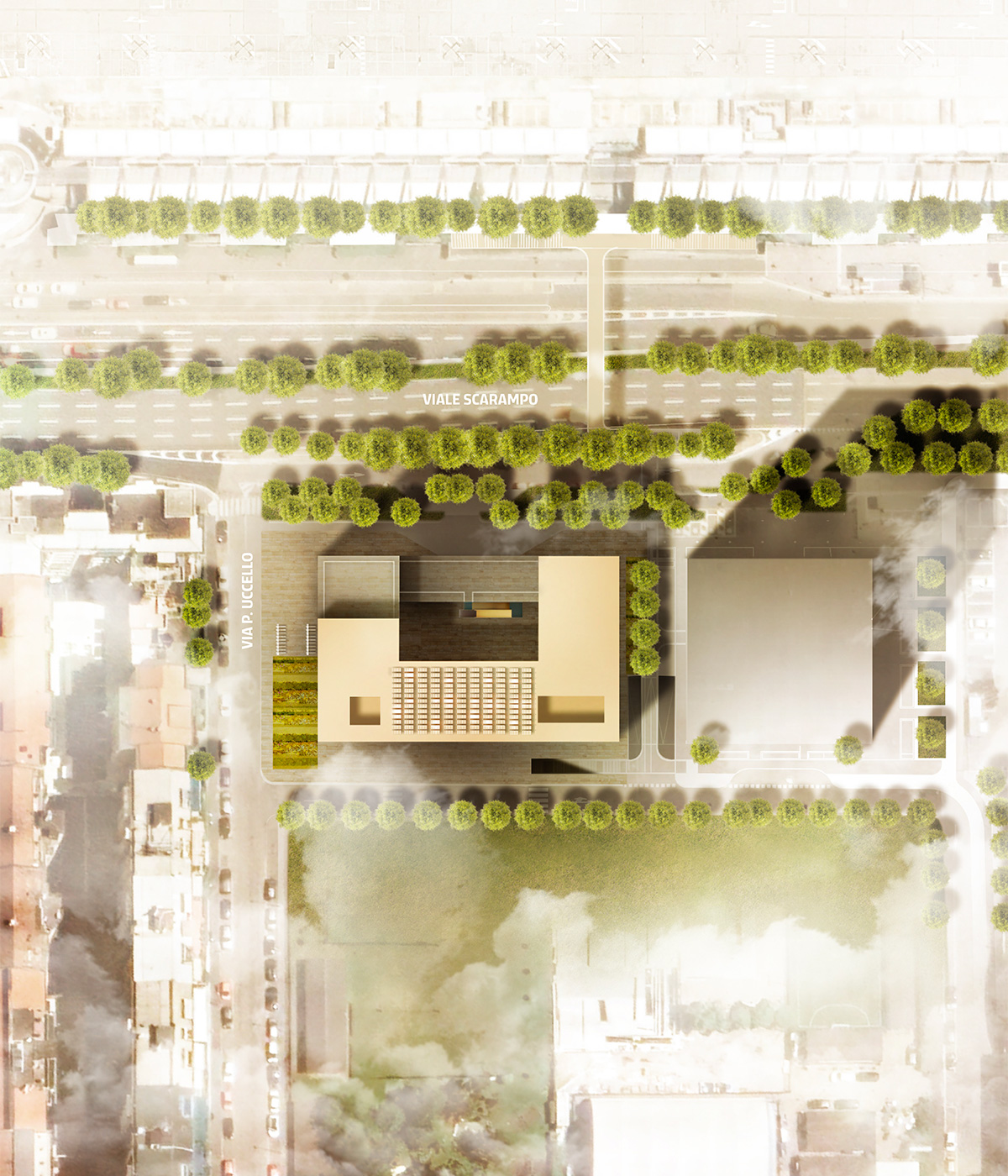
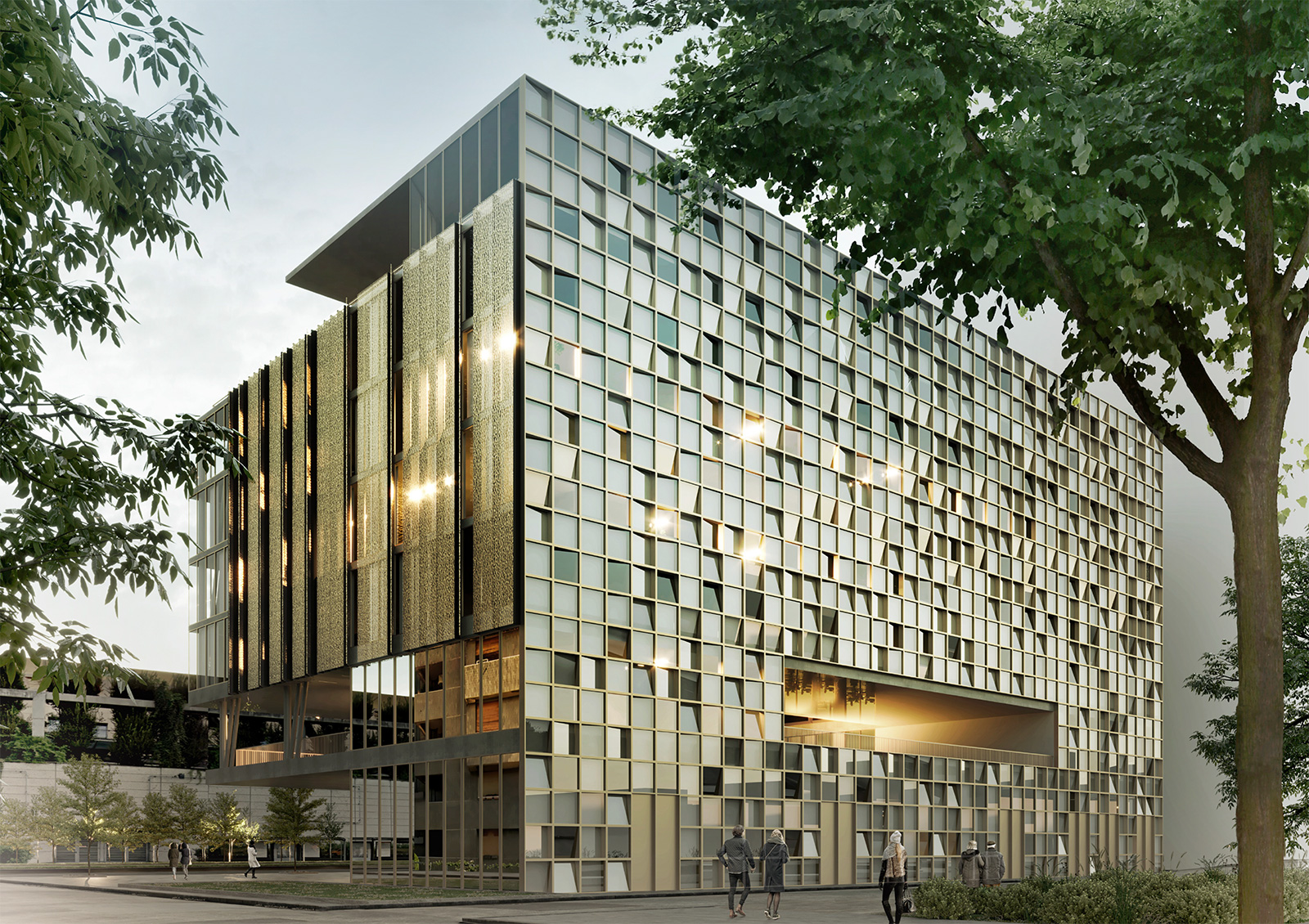
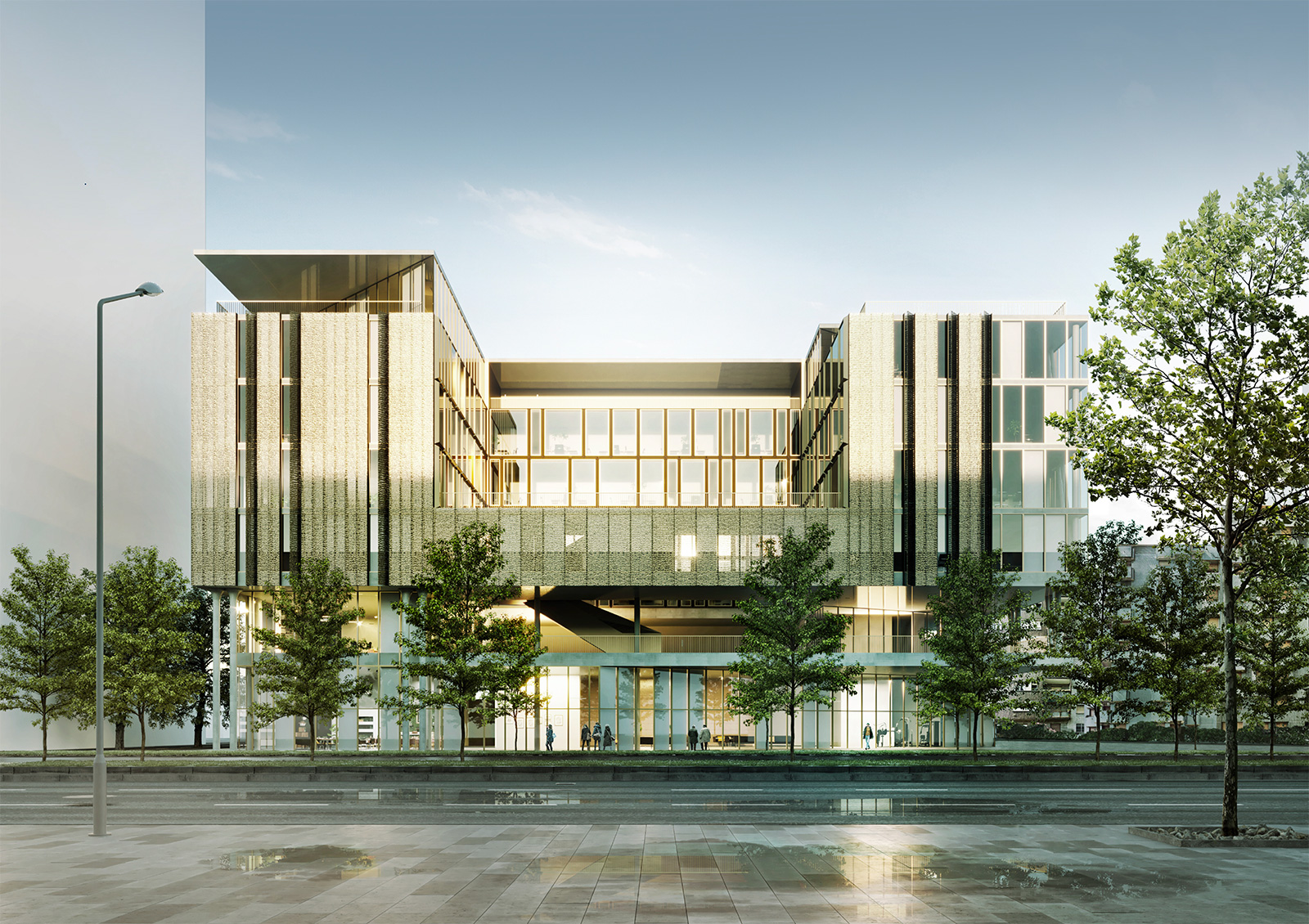
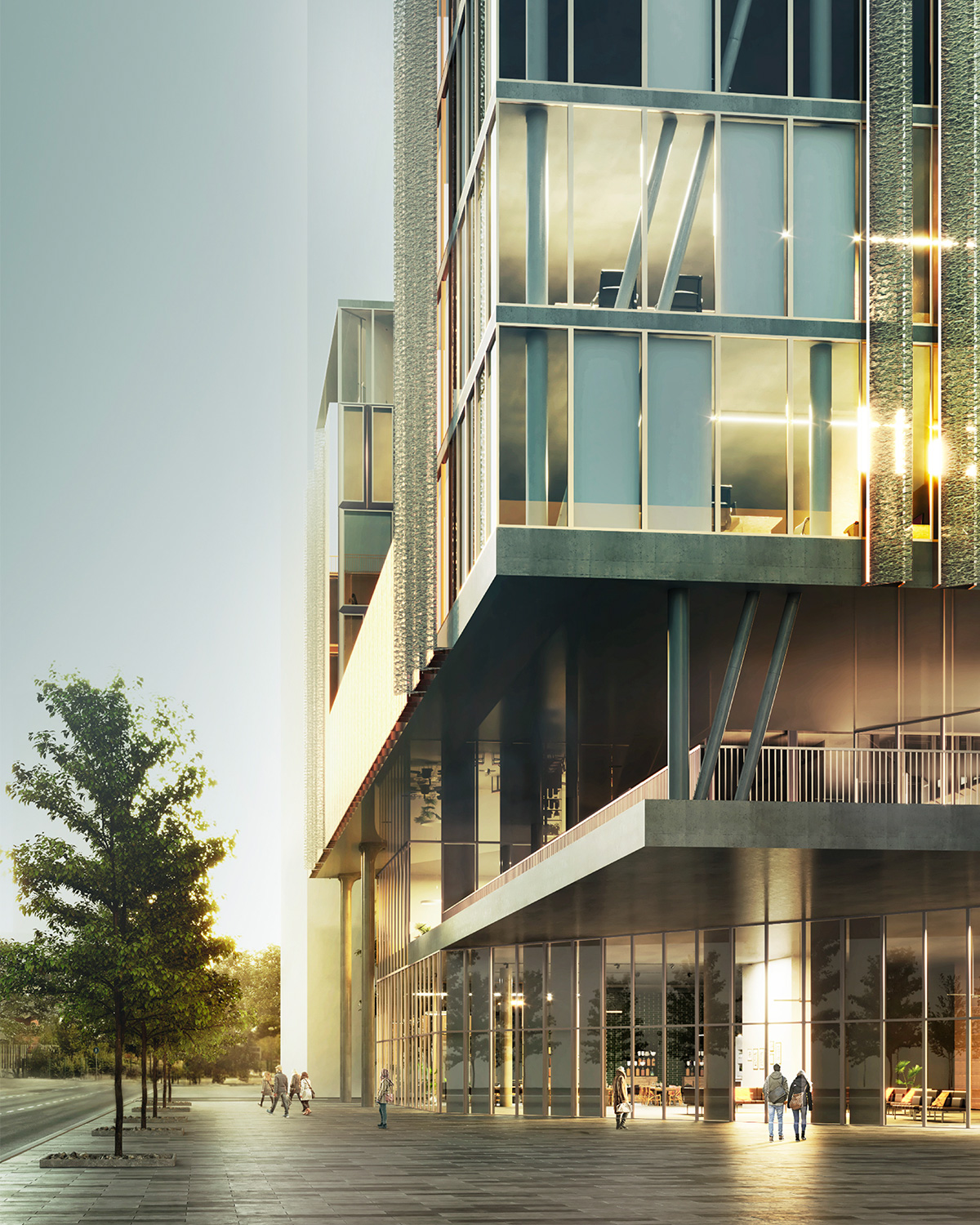
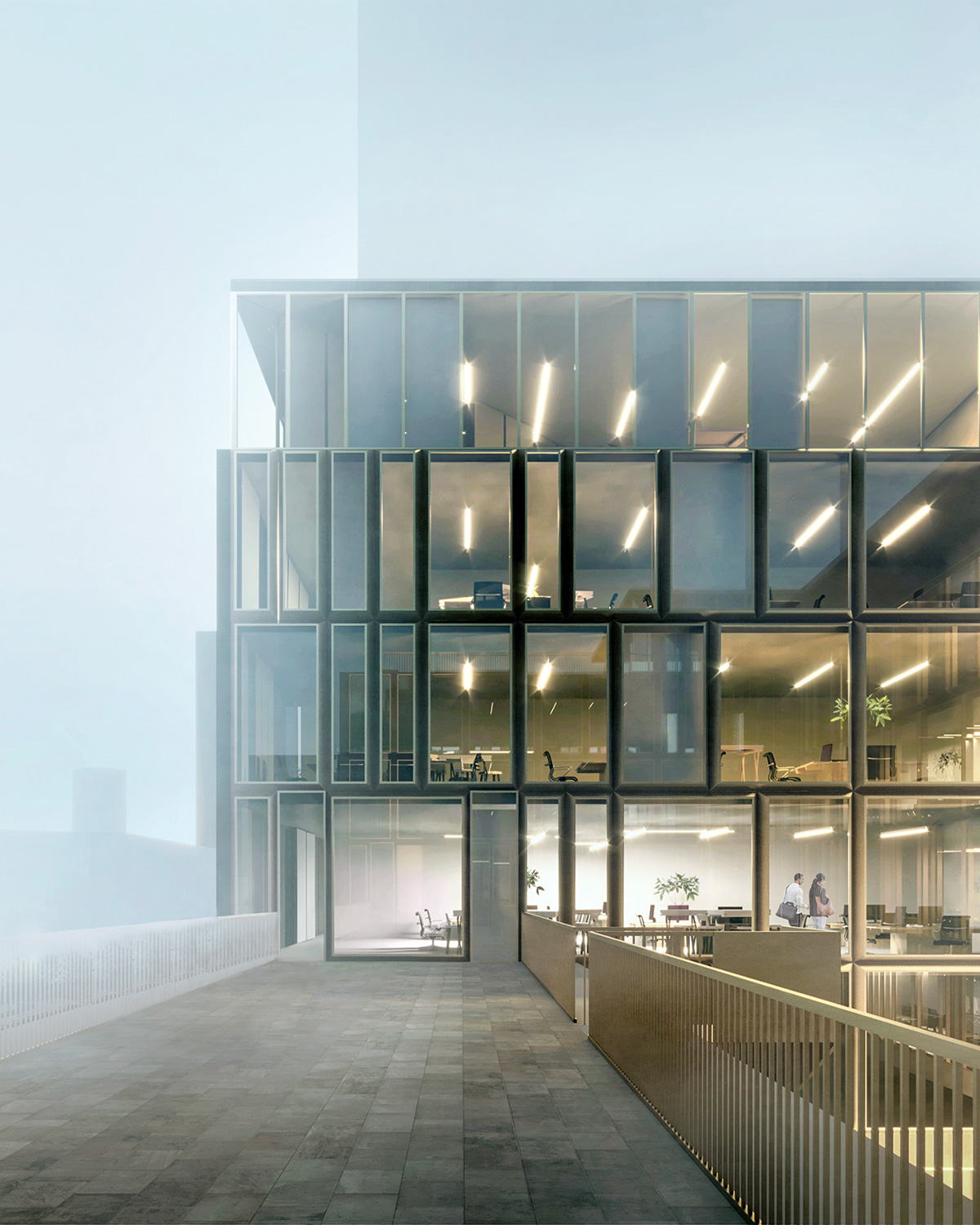
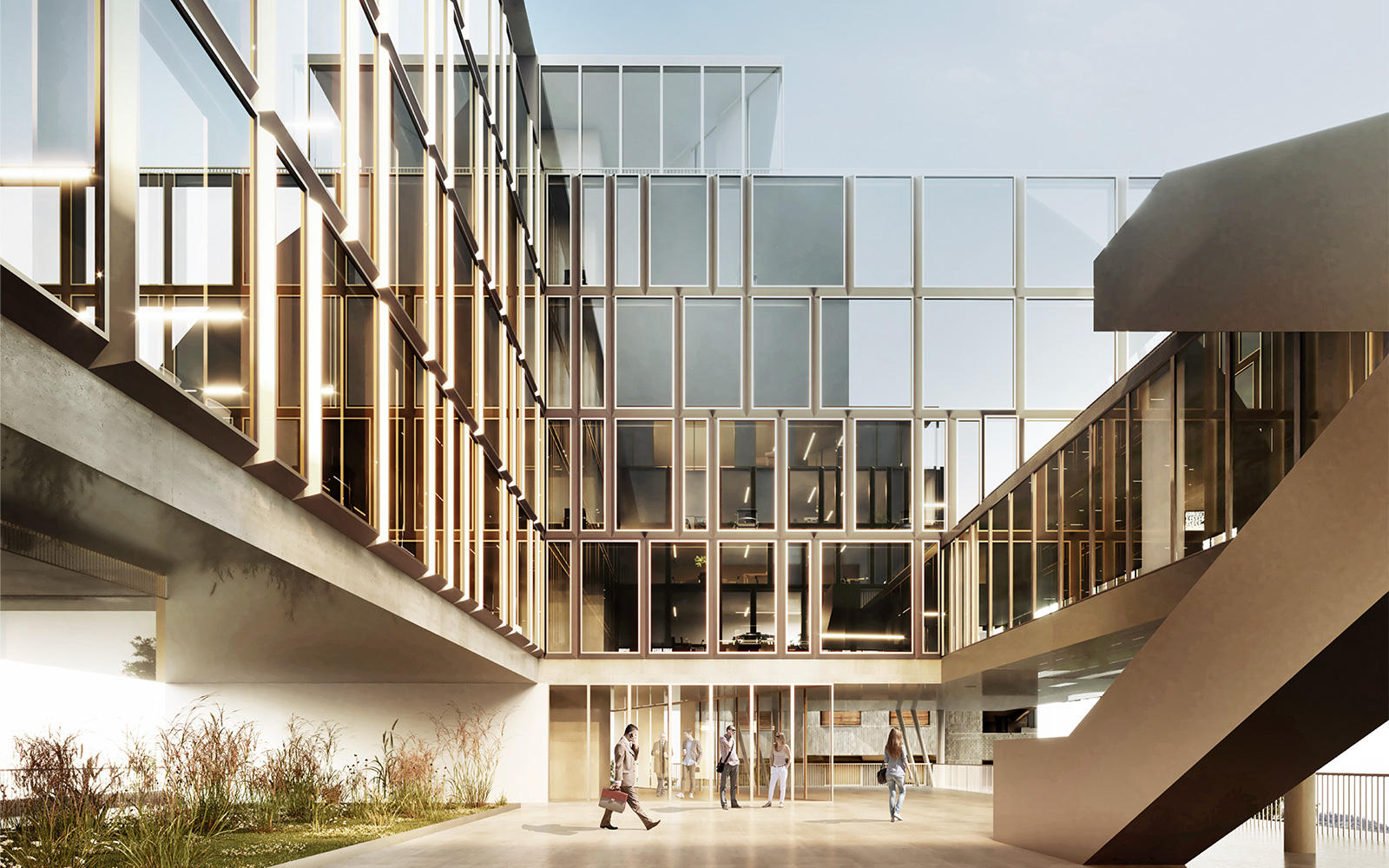
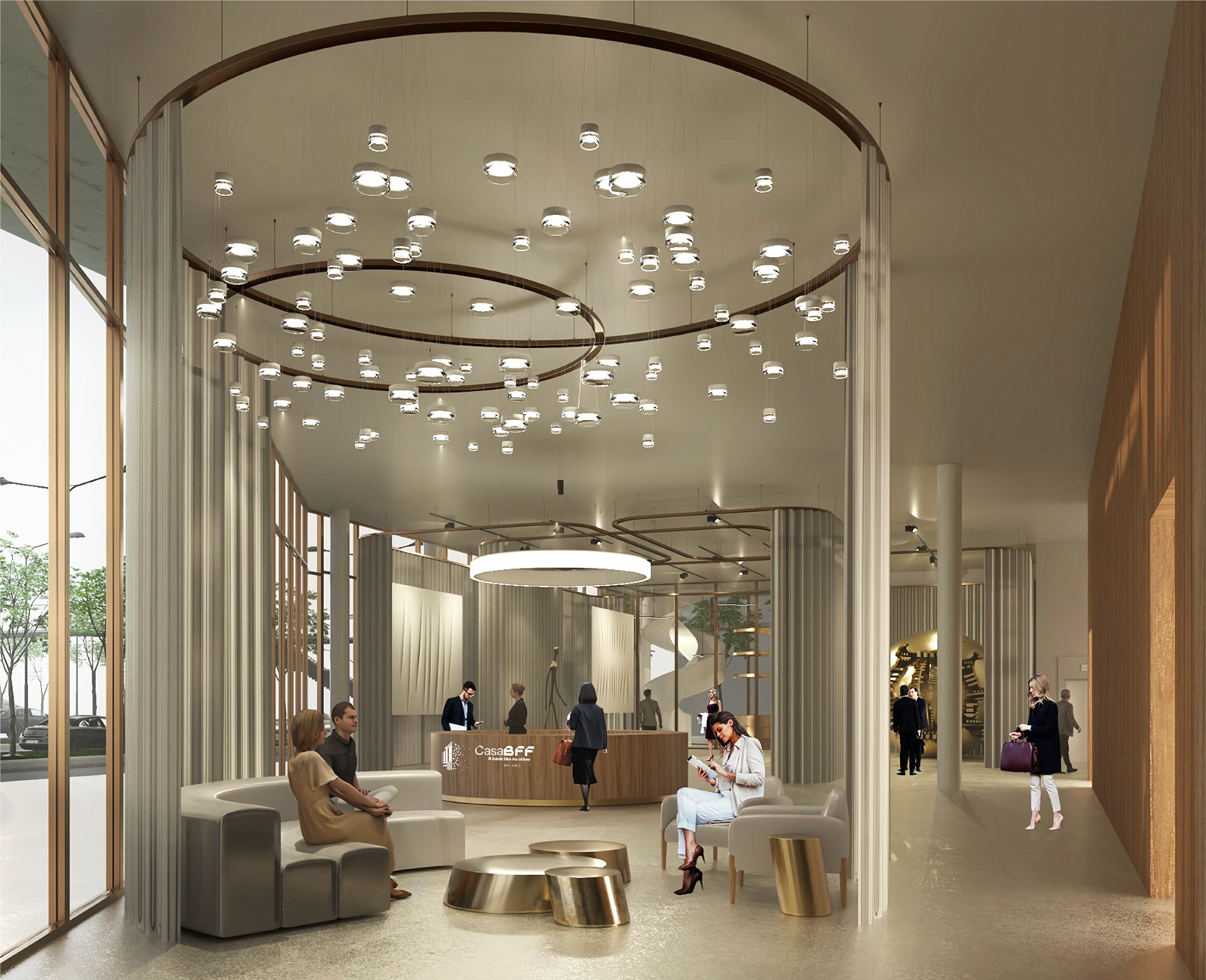
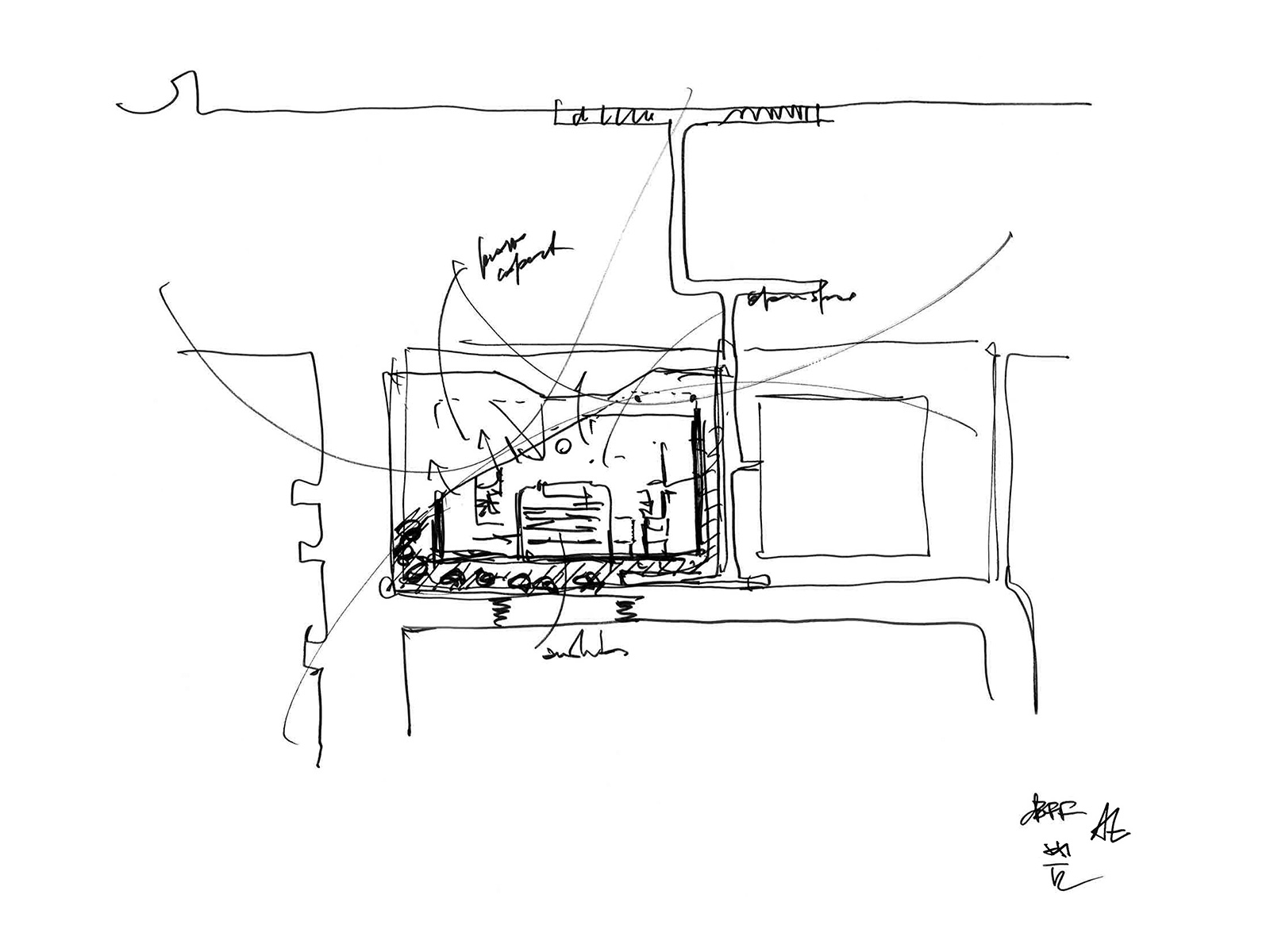
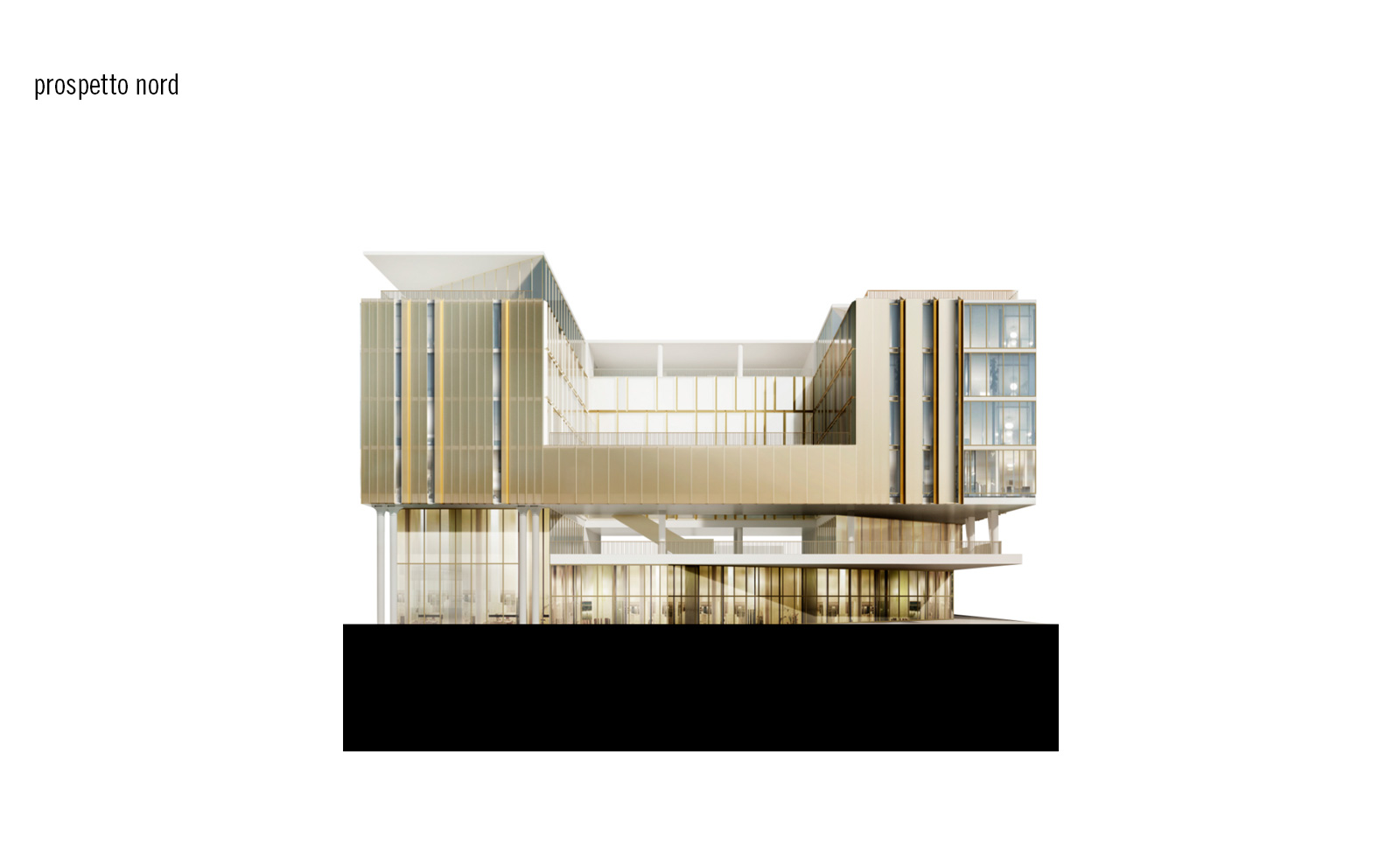
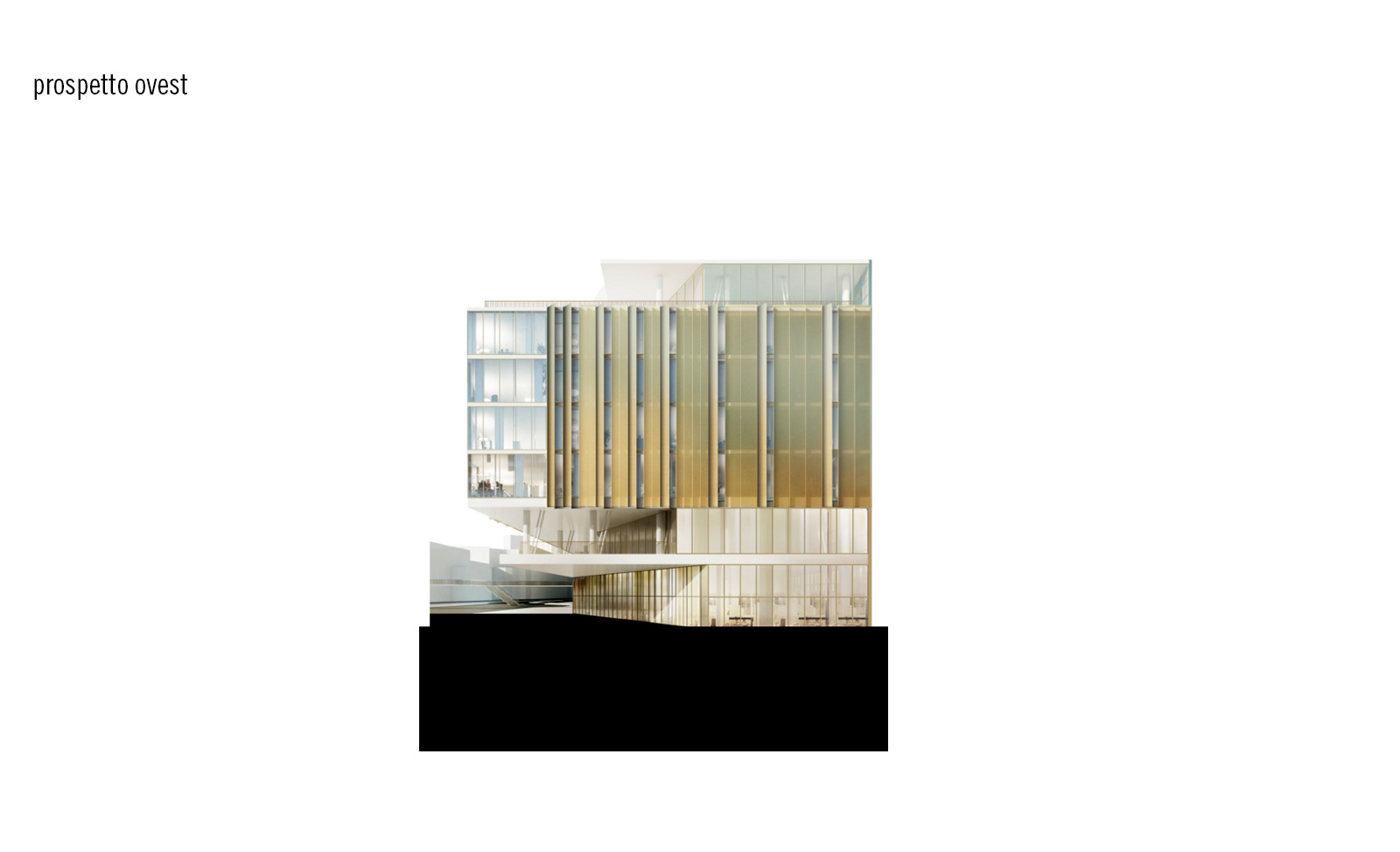
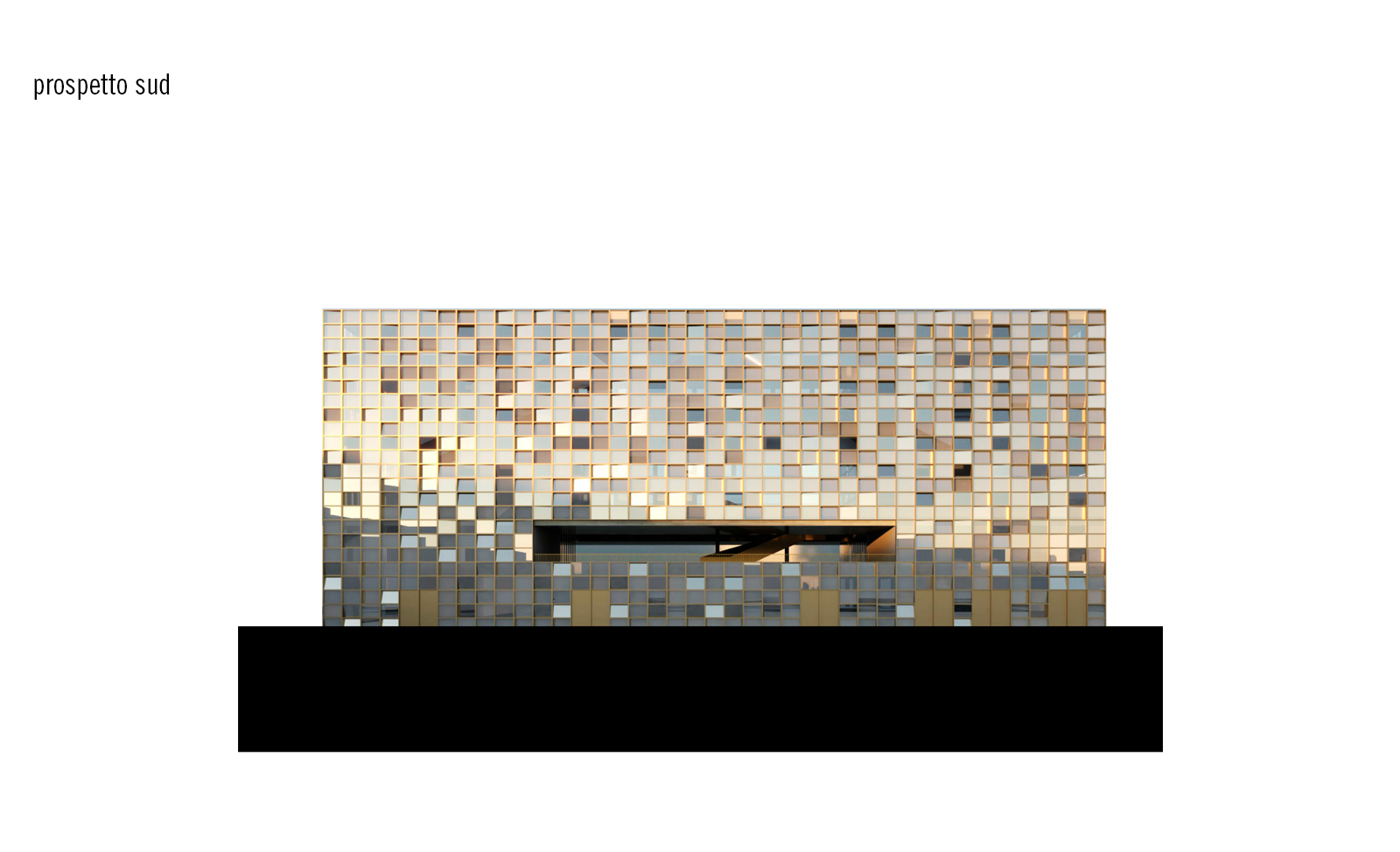
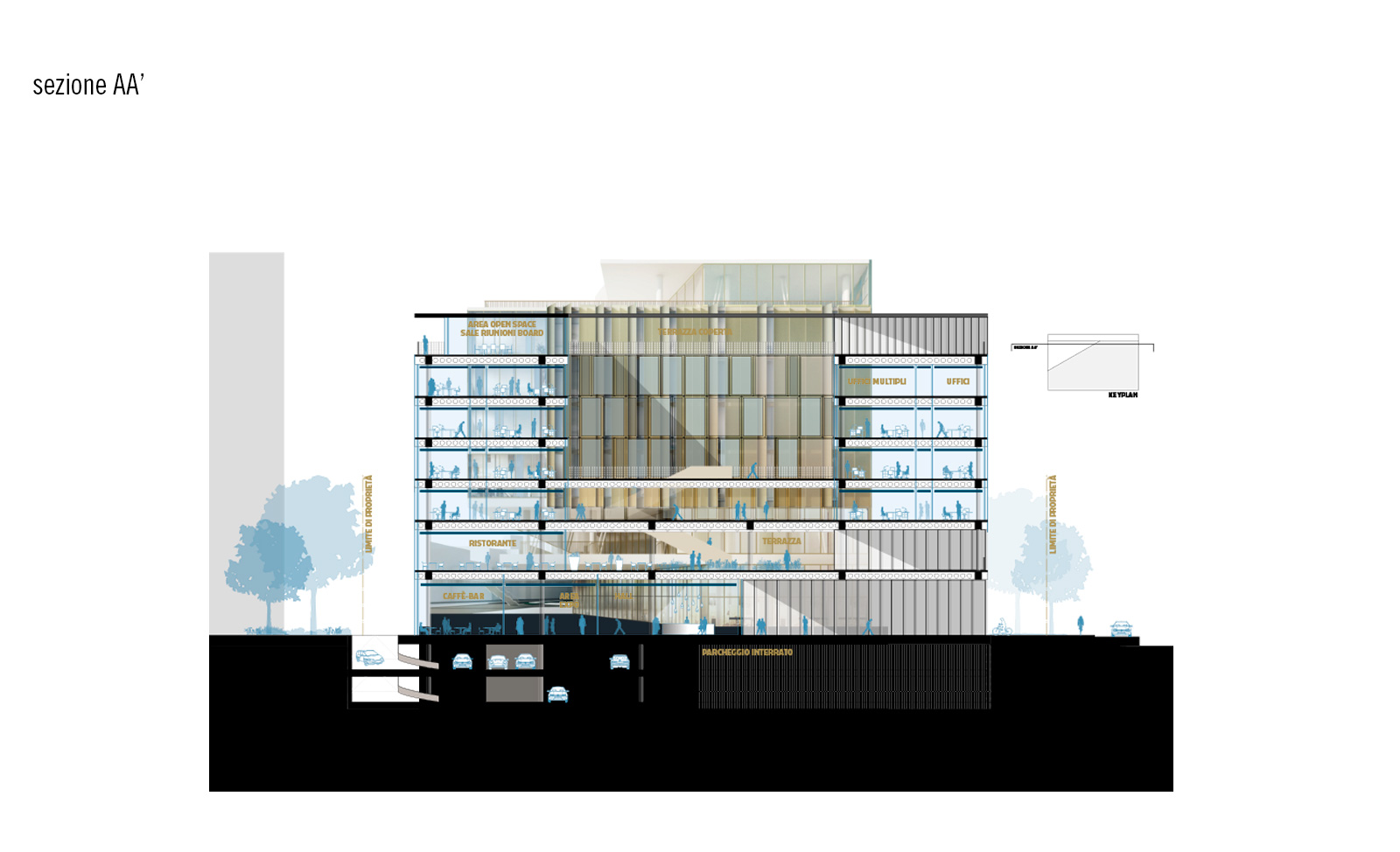
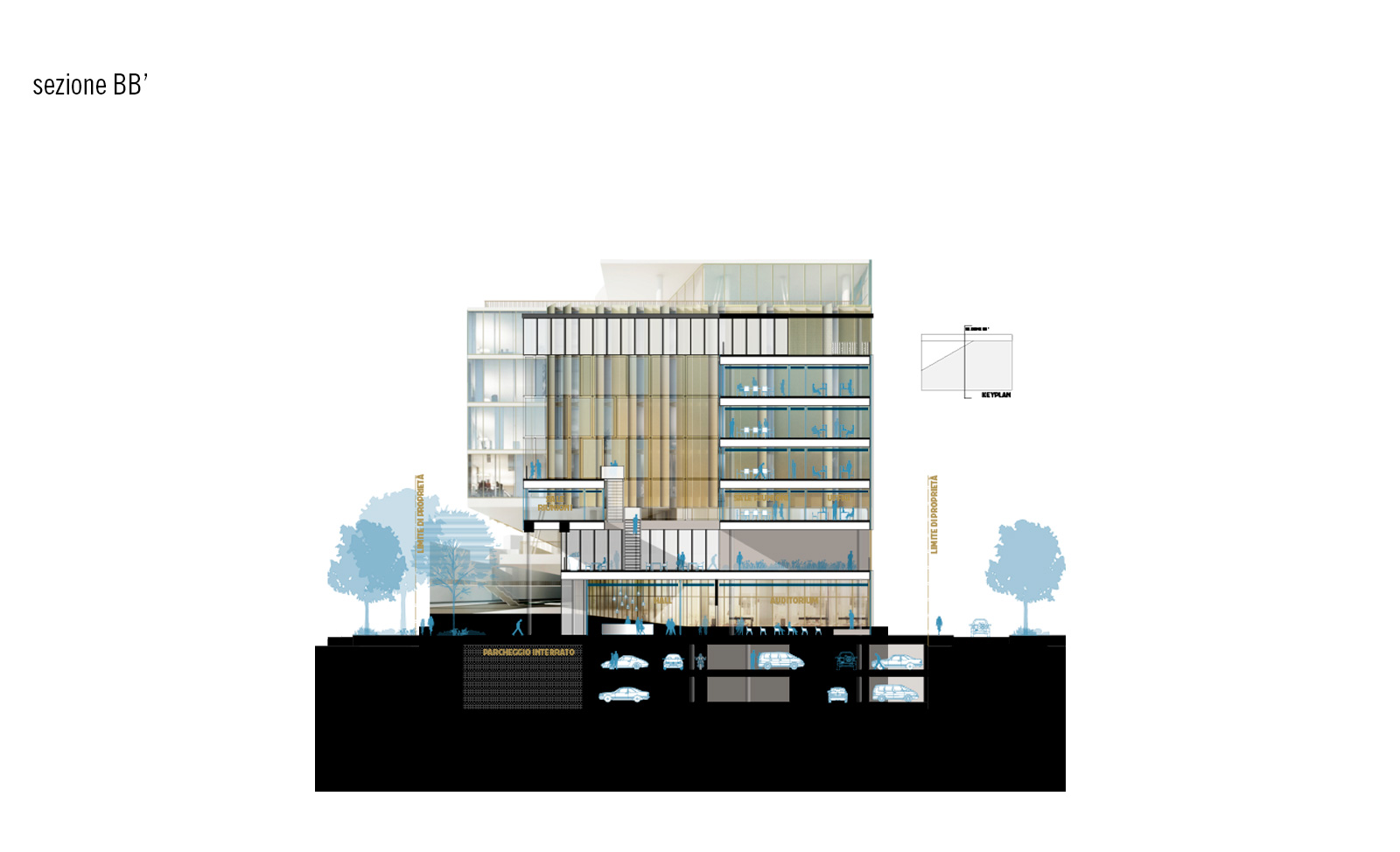
Casa BFF
Milan, Italy
competition 2021
program: “Casa BFF” design project for the construction of the new headquarters in Milan, Via Scarampo area, for BFF Bank s.p.a.
The directional headquarters building, also includes an auditorium, restaurant, bar, expo area, gym, indoor courtyard and pertaining green areas
> total area: 6.824 m²
client: BNP Paribas per BFF Bank
Alfonso Femia / Atelier(s) Alfonso Femia with
structural engineering: B&C Associati
services, energy engineering, and certifications: United Consulting Engineering
images: ©AF517 & Diorama
Milan, Italy
competition 2021
program: “Casa BFF” design project for the construction of the new headquarters in Milan, Via Scarampo area, for BFF Bank s.p.a.
The directional headquarters building, also includes an auditorium, restaurant, bar, expo area, gym, indoor courtyard and pertaining green areas
> total area: 6.824 m²
client: BNP Paribas per BFF Bank
Alfonso Femia / Atelier(s) Alfonso Femia with
structural engineering: B&C Associati
services, energy engineering, and certifications: United Consulting Engineering
images: ©AF517 & Diorama
“Sharing, exchange, action, cooperation, and creation are the key words useful to best stimulate the daily routine and approach to work in the spaces that host hundreds of professionals. Cutting-edge tools, innovative media, creative environments, informal spaces, exhibition area for the pursuit of ‘beauty’ where you can immerse yourself in the spaces of sharing, dynamism and networking in a sustainable environment.” AF
The area where the new building for the BFF bank will rise has a strategic role within City Life. A series of representative places for the city surround it going to create an identity pole for citizenship, work and leisure. On Viale Scarampo in fact, opposite the site of the future building, is the Fiera di
Milan, which hosts major events throughout the year, and The MiCo (Milan Convention Centre), which is the largest convention center in Europe.
The design genesis thus seeks a sequence of “natural” relationships, indulging constraints, to establish a urban-territorial dialogue that can be a guide of forms and compositional relationships and that is shaped by the environment.
The initial design idea, was to want to create a symbolic courtyard building, facing Scarampo Avenue in which the interior space could merge with the exterior space.
The constraint related to the passage of the Underground Tunnel, however, determined a different conformation of the overall volumetry of the building by going to adapt the ground floor, and consequently the entire planivolumetric and structural development. This defined a ground floor suitable for both the needs of the notice and those of the area by placing the original idea of an internal courtyard on the first floor.
On the office floor, a quality and performing spatial layout was ensured by structural engineering that allows the west wing of the floors above to be suspended from the central core, reinforcing and enhancing the idea of cantilevering. In this way at the footprint of the subway line, the structure does not loom over but at the same time takes center stage.
Milan, which hosts major events throughout the year, and The MiCo (Milan Convention Centre), which is the largest convention center in Europe.
The design genesis thus seeks a sequence of “natural” relationships, indulging constraints, to establish a urban-territorial dialogue that can be a guide of forms and compositional relationships and that is shaped by the environment.
The initial design idea, was to want to create a symbolic courtyard building, facing Scarampo Avenue in which the interior space could merge with the exterior space.
The constraint related to the passage of the Underground Tunnel, however, determined a different conformation of the overall volumetry of the building by going to adapt the ground floor, and consequently the entire planivolumetric and structural development. This defined a ground floor suitable for both the needs of the notice and those of the area by placing the original idea of an internal courtyard on the first floor.
On the office floor, a quality and performing spatial layout was ensured by structural engineering that allows the west wing of the floors above to be suspended from the central core, reinforcing and enhancing the idea of cantilevering. In this way at the footprint of the subway line, the structure does not loom over but at the same time takes center stage.



